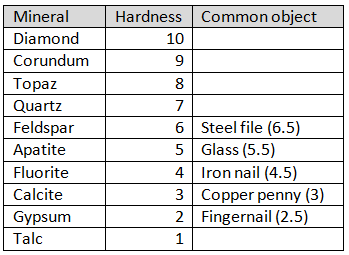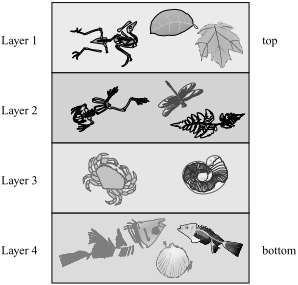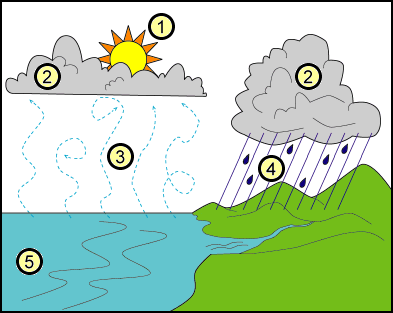
The likely identify of a mineral can be scratched by Fluorite but not scratched by Gypsum.
What is Calcite?
Seafloor spreading helped to prove this theory.
What is the theory of continental drift?
The reason earthquakes occur.
What are rocks become too stressed and they break?

TRUE OR FALSE: The Fault is OLDER than layer Z.
What is FALSE?
TRUE OR FALSE: Most of Earth's freshwater is found in lakes and streams.
What is FALSE?
Describe the process of frost wedging.
What is water gets into a crack of a rock, freezes and expands and when this process happens over and over it causes rocks to break apart?
The FOUR pieces of evidence that Wegener used to support continental drift.
What are fossil clues, climate clues, fit (shape) of the continents, and rock clues?
The THREE different ways volcanoes can form.
What are convergent boundaries, divergent boundaries, and hot spots?
What are relative ages are determined by comparing rock layers to one another and absolute ages are determined using radiometric dating?
Infiltration occurs the S L O W E S T in this type of soil. Describe why.
What is in soil with smaller particles because the spaces between soil is smaller?
FIVE characteristics that all minerals share.
What are they are naturally occurring, inorganic, solid, with a definite chemical composition and orderly arrangement of atoms (crystal structure)?
What are oceanic crust is younger, thinner, less dense, made mostly of basalt and continental crust is older, thicker, more dense, made mostly of granite?
Describe the reason why three seismograph stations are needed to locate the epicenter of an earthquake.
What is so the distances can be found for all three stations using the S-P interval and the three circles created can all overlap in one spot?

The oldest layer of this rock section contains these organisms and the youngest layer contains these organisms.
What are the fish are the oldest and the leaves/bird is the youngest?

Describe step number 3 in the water cycle diagram shown.
What is evaporation (liquid water changing into water vapor and rising into the atmosphere)?
The difference between intrusive and extrusive igneous rocks.
What are intrusive rocks form inside the Earth and have LARGE CRYSTALS and extrusive rocks form outside the Earth and have SMALL CRYSTALS.
Describe what happens AND what forms at a continent to continent convergent boundary.
What is neither plate subducts because the density of both is too low so the plates crumple upwards and form mountains?
A seismograph station on the opposite side of the Earth from the epicenter of an earthquake will detect these types of waves. Explain why. (BE SPECIFIC)
What is P-waves only because the S-waves cannot travel through liquid and are stopped by the outer core?

A scientist studying rock layers in a different area finds a layer containing fossils of a crab and a shell. The scientist can conclude the relative age of the rock layer by matching the fossils up with which layer in this diagram and describe why.
What is with layer 3 because this layer also contains a fossil of a crab and a shell?

Describe step number 2 in the water cycle diagram above.
What is condensation (water vapor condenses into liquid water droplets and forms clouds)?
Describe how sedimentary rocks, igneous rocks, AND metamorphic rocks form.
What are sedimentary rocks form from deposition and compaction of sediments, igneous rocks form from cooling magma or lava, and metamorphic rocks form from a rock undergoing heat and pressure?
Describe what happens AND what forms at an ocean to continent convergent boundary.
What is the oceanic plate subducts because it is more dense and a continental volcanic mountain chain and deep sea trench form?
List the types of volcano in order from MOST violent eruptions to LEAST violent eruptions.
What are Cinder Cone (explosive only), Stratovolcano (mostly explosive with some quiet eruptions), and Shield Volcano (quiet or gentle eruptions)?
The THREE criteria for a fossil to be an index fossil.
What are ABUNDANT, WIDESPREAD and EXISTED FOR A SHORT PERIOD OF TIME?
Describe why we will not run out of freshwater even though we use it every day.
What is because the water cycle is constantly replenishing the water in all parts of the cycle?